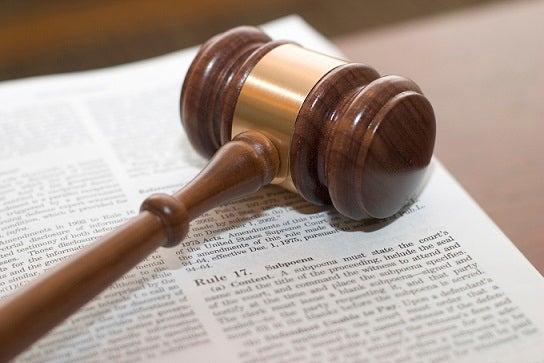By: Megan Ceronsky, EDF attorney, and Peter Heisler, legal fellow
 The bedrock legal authority underlying the U.S. Environmental Protection Agency’s (EPA) Clean Power Plan is broadly recognized — by our nation’s highest court, states, power companies, academic experts, and the EPA General Counsel serving during the President George H.W. Bush administration.
The bedrock legal authority underlying the U.S. Environmental Protection Agency’s (EPA) Clean Power Plan is broadly recognized — by our nation’s highest court, states, power companies, academic experts, and the EPA General Counsel serving during the President George H.W. Bush administration.
Our recent Climate 411 post chronicles the Supreme Court’s decisions affirming EPA’s authority to address carbon pollution from power plants under section 111 of the Clean Air Act.
In Massachusetts v. EPA (2007), the Court held that carbon dioxide is a pollutant under the Clean Air Act. Then, in AEP v. Connecticut (2011), the Court explicitly recognized EPA’s authority to limit emissions of carbon dioxide from power plants pursuant to section 111, and acknowledged the agency’s ongoing efforts to do so.
Even before AEP was decided, however, legal researchers and academics had identified section 111 as a promising avenue for regulating carbon pollution from power plants and industrial facilities:
- A 2009 report by the Congressional Research Service found that “Section 111 appears to provide a strong basis for EPA to establish a traditional regulatory approach to controlling greenhouse gas emissions from large stationary sources.”
- A 2010 paper by Duke University’s Nicholas Institute for Environmental Policy Solutions observed that “[S]ection 111 appears to provide the EPA with the best means to create a system that … implements a cost-effective program that delivers meaningful emissions reductions, is consistent with both the statutory language of the Act and legal precedent, and is politically viable.”
- A 2011 survey of the academic community found “widespread agreement” that “[section] 111 authorizes the use of many types of flexible approaches” to regulating carbon pollution.
Indeed, states, power companies, and other stakeholders have all recently analyzed and supported EPA’s authority to limit carbon pollution from power plants:
- Kentucky recognized EPA’s role in setting the benchmark that states will have to meet under section 111.
- Pennsylvania said that section 111 was the “most appropriate” provision for regulating carbon dioxide emissions from power plants.
- The nine Northeastern and Mid-Atlantic states participating in the Regional Greenhouse Gas Initiative “recommend[ed] that EPA use its authority under section 111 of the Clean Air Act to ensure significant overall reductions in carbon emissions.”
- Fifteen states from across the country agreed that “EPA needs to seize [the] opportunity [for pollution reduction] because Section 111(d) standards are to be based on the ‘best system of emission reduction,’” including energy efficiency and renewable energy.
- The Clean Energy Group, whose members include some of the largest generators of electricity in the country, noted that “EPA has significant discretion under section 111(d) in determining both the appropriate level of the standards for existing power plants, as well as the form of the regulations.”
Environmental law experts have also analyzed and endorsed EPA’s authority to regulate carbon pollution from power plants:
- UCLA Law Professor Ann Carlson said “[I]t is important to be clear here: the President is required to issue the rules, required by law and by the interpretation of the law by the highest Court in the land.”
- Harvard Professor Jody Freeman called critics’ claims to the contrary “weak,” explaining that “[t]he record clearly shows that Congress intended to ensure that harmful pollutants from existing power plants could not entirely escape regulation. These emissions qualify for regulation under 111(d) because they are not covered elsewhere in the law and account for nearly 40 percent of the nation’s total emissions of carbon dioxide, the principal driver of global warming.”
- E. Donald Elliott, EPA General Counsel under President George H.W. Bush, noted that “the Supreme Court and other courts have upheld EPA’s authority to address this issue,” and “[a] system-wide approach provides needed flexibility and reduces costs, as well as encouraging investment in lower-emitting generation. EPA has wisely left the states a lot of discretion rather than mandating specific measures as some had wanted…”
- Carol Browner, EPA Administrator during the Clinton administration, wrote that “EPA has authority under the 1990 Clean Air Act, an authority affirmed by the U.S. Supreme Court, to set these public health protections against carbon pollution.”
Finally, Leon G. Billings, who was the principal staff author of the Clean Air Act of 1970, shared his personal knowledge of the statute:
Critics of the move say that President Obama is making an end run around Congress, stretching the law to achieve by executive action what he could not accomplish through the legislative branch … This is flat wrong. More than four decades ago, Congress expressed its clear desire to regulate pollution from power plants, in the form of the Clean Air Act. I know, because I worked on the legislation, including the key part of the act — Section 111 — that the Obama administration is using to justify its move.
The legal community broadly recognizes EPA’s authority and obligation to address carbon pollution emitted by power plants. This is perhaps unsurprising, as all these statements simply echo what the Supreme Court has already held — that EPA’s efforts to reduce carbon pollution from power plants are firmly grounded in the law.
This commentary originally appeared on our Climate 411 blog.









